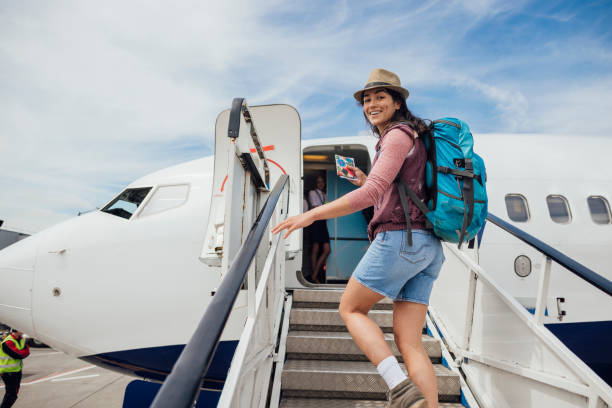Traveling is an exciting way to explore new cultures, meet interesting people, and broaden your horizons. Whether you’re planning a weekend getaway or a month-long adventure, one thing remains crucial—your safety. In today’s fast-paced world, ensuring your security while traveling is more important than ever. Not only does it protect you, but it also allows you to fully enjoy your trip without unnecessary stress. This guide aims to equip you with practical tips and insights to keep you safe and secure on your next adventure. From pre-travel planning to staying secure at your destination and returning home safely, we’ve got you covered.
The Importance of Safety While Traveling
When we travel, we often focus on creating memories and experiencing the joy of discovery. However, safety should be a top priority that accompanies every adventure. Understanding the potential risks and how to mitigate them can make a significant difference in how enjoyable your trip can be. Travelers who prioritize safety not only protect their well-being but also gain peace of mind, knowing they are prepared for any situation. This guide will help you recognize the importance of staying vigilant, prepare appropriately, and handle unforeseen events with confidence.
Travel safety is about taking proactive measures to protect yourself, your belongings, and your personal information. With the right knowledge and preparation, you can minimize risks and enhance your travel experience. Staying secure while traveling ensures that your adventure is filled with positive experiences and cherished memories. By understanding the significance of travel safety, you can focus on exploring new destinations and cultures with confidence and excitement.
Pre-Travel Preparation Securing Your Home and Belongings
Before you set off on your travels, it’s essential to take steps to secure your home and belongings. Proper pre-travel preparation ensures that you return to a safe and undisturbed household. Start by creating a checklist that includes tasks such as locking all doors and windows, setting up a security system, and notifying a trusted neighbor or friend to keep an eye on your property. These preventative measures can significantly reduce the risk of break-ins and theft.
Consider investing in timers for your lights to give the appearance that someone is home. This simple yet effective strategy can deter potential intruders and provide added security. Additionally, don’t forget to pause mail deliveries or arrange for someone to collect your mail regularly. An overflowing mailbox is a telltale sign that no one is home, making your property vulnerable to burglars.
Finally, protect your valuables by storing them in a safe place or leaving them with a trusted friend. Avoid sharing your travel plans on social media until after you return, as this information can inadvertently alert potential thieves to your absence. With these preparations in place, you can enjoy your travels with the confidence that your home is secure and well-protected.
Tips for Safe and Informed Travel Research and Emergency Contacts
An essential aspect of travel safety is being well-informed about your destination. Conduct thorough research to familiarize yourself with local customs, laws, and potential risks. This knowledge will help you make informed decisions and avoid situations that could compromise your safety. Start by consulting travel guides, government travel advisories, and online forums to gather valuable insights about your destination.
Having a list of emergency contacts is crucial for staying safe while traveling. Compile a list that includes local emergency services, the nearest embassy or consulate, and any friends or family in the area. Keep this list easily accessible on your phone and as a printed copy in case of emergencies. Being prepared with the right contacts can make a significant difference in a crisis.
Health considerations play a crucial role in ensuring travel safety. Before embarking on your journey, make sure you are up to date on all necessary vaccinations and have any required medications on hand. It’s wise to carry a basic first aid kit stocked with essentials like band-aids, antiseptic wipes, and pain relievers. Additionally, consider investing in travel insurance to safeguard against unexpected medical expenses, including medical transport services for those with pre-existing conditions. By taking these precautions, you’ll be well-equipped to tackle any health-related challenges that may arise during your travels.
Protecting Personal Information Cybersecurity and Public Wi-Fi Safety
In today’s digital age, protecting your personal information is a critical aspect of travel safety. Cybersecurity threats are prevalent, and travelers often rely on public Wi-Fi networks that can be vulnerable to hackers. To safeguard your information, avoid accessing sensitive accounts, such as banking or email, over public Wi-Fi. If necessary, use a virtual private network (VPN) to encrypt your data and enhance security.
When traveling, be cautious with your devices. Use strong, unique passwords for all accounts and enable two-factor authentication whenever possible. Regularly back up important data to prevent loss in case your device is stolen or compromised. Additionally, keep your devices updated with the latest security patches to protect against potential vulnerabilities.
Physical protection of your devices is also essential. Never leave your phone, laptop, or other electronics unattended in public spaces. Use hotel safes or secure luggage compartments to store your devices when they are not in use. By taking these cybersecurity precautions, you can ensure that your personal information remains safe and secure throughout your travels.
Navigating Safe Transportation Driving Public Transport and Reputable Services
Safe transportation is vital for a secure travel experience. Whether you’re driving, using public transport, or hiring services, it’s important to prioritize safety. If you plan to drive, familiarize yourself with local traffic laws and road conditions. Ensure that your vehicle is in good working condition and has all necessary safety features, such as seatbelts, airbags, and functioning lights.
Public transportation can be a convenient and cost-effective way to get around, but it’s essential to remain vigilant. Stay aware of your surroundings, keep an eye on your belongings, and avoid displaying valuable items that may attract theft. If you’re traveling late at night, opt for well-lit stations and stops to enhance your safety.
When choosing transportation services, such as taxis or ride-sharing apps, opt for reputable companies with positive reviews. Verify the driver’s identity and vehicle details before getting in, and share your ride information with a trusted contact. By following these guidelines, you can ensure a safe and enjoyable transportation experience during your travels.
Staying Safe at Your Destination Personal Safety and Avoiding Tourist Scams
Once you’ve arrived at your destination, maintaining personal safety should be a top priority. Be mindful of your surroundings and trust your instincts. If something feels off or unsafe, remove yourself from the situation. Familiarize yourself with local emergency numbers and keep them handy in case you need assistance.
Tourist scams are prevalent in many popular destinations, and being aware of common tactics can help you avoid falling victim. Research the typical scams in your area and learn how to recognize them. For example, be cautious of overly friendly strangers offering unsolicited help, as they may be trying to distract you while an accomplice attempts to steal your belongings.
Staying connected with fellow travelers or locals can also enhance your safety. Consider joining group tours or activities where you can meet others and share experiences. Establishing a support network can provide valuable insights and guidance, particularly if you’re traveling alone. By taking these precautions, you can enjoy your destination with confidence and peace of mind.
Returning Home Safely Post-Travel Checklist to Secure Your Home and Information
After a fulfilling trip, it’s essential to ensure a safe return home. Start by conducting a thorough inspection of your property to confirm that everything is as you left it. Check for any signs of break-ins or disturbances, and address any issues promptly. Reconnect with neighbors or friends who were keeping an eye on your home to discuss their observations.
Once you’re settled back in, update your passwords for accounts you accessed while traveling, especially if you used public Wi-Fi. This simple step can protect your information from potential cyber threats. Review your bank statements and credit card transactions for any unauthorized charges, and report discrepancies immediately.
Lastly, reflect on your travel experiences and take note of any safety lessons learned. This reflection can help you prepare for future trips and ensure that you remain vigilant in safeguarding your well-being. With these steps, you can transition smoothly from your travel adventures back to daily life, knowing that your home and personal information are secure.
Wrapping Up Your Travel Safety Journey
Traveling is a rewarding and enriching experience, but it requires a proactive approach to safety. By prioritizing security and following the tips outlined in this guide, you can ensure that your travels are marked by positive experiences and cherished memories. From pre-travel preparation to staying safe at your destination and returning home, each step plays a crucial role in safeguarding your well-being.
Remember that travel safety is an ongoing process that involves staying informed, vigilant, and prepared for any situation. By adopting these habits, you’ll be well-equipped to handle any challenges that come your way while exploring new horizons.




